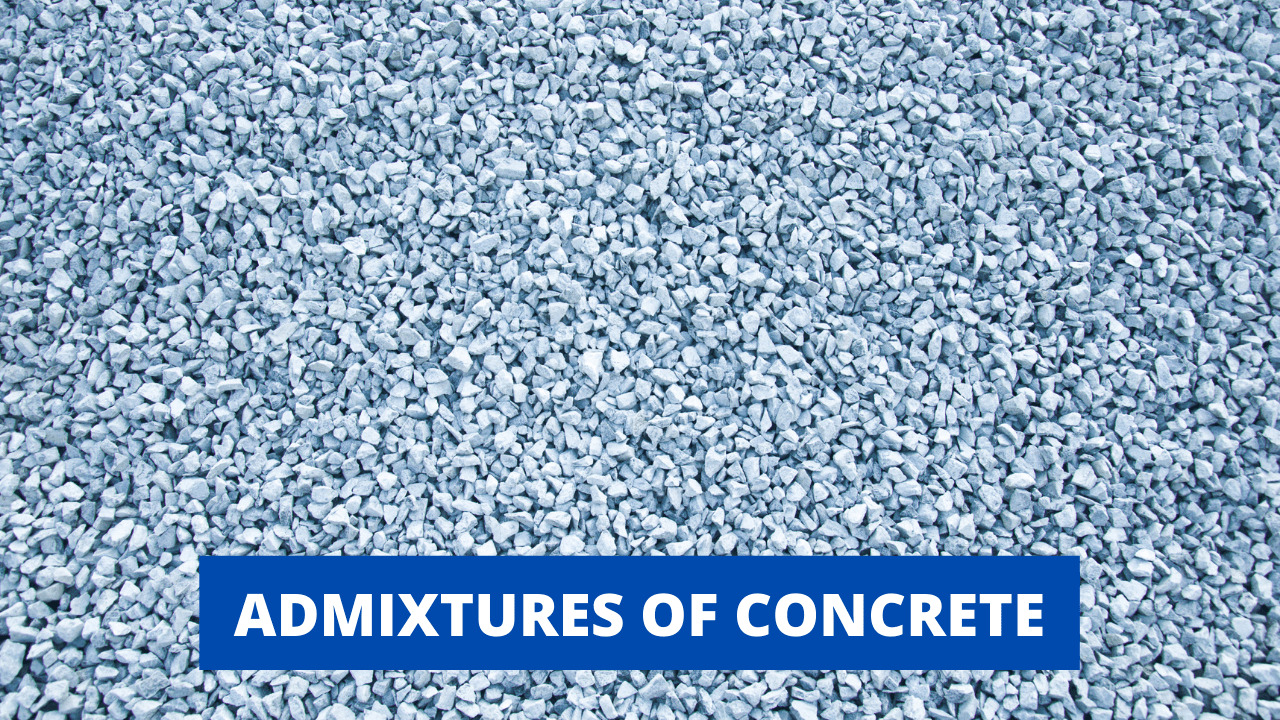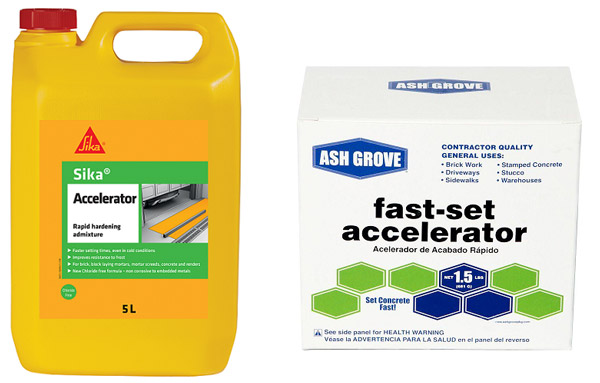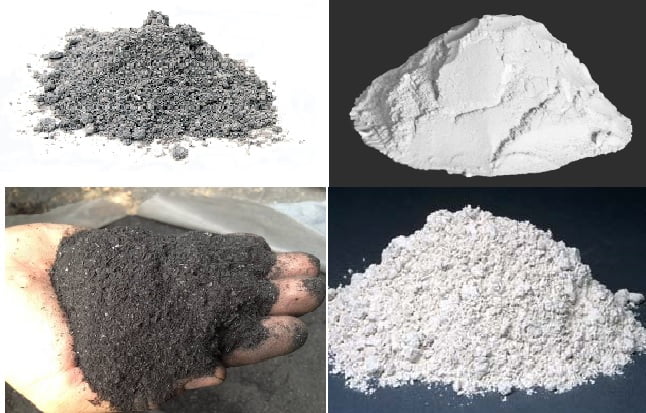Primarily, concrete is a heterogeneous mixture of cement, aggregates, and water. However, the environmental and climatic conditions at times take the lead and govern the strength and durability of concrete. In every case, it is to be made sure that the concrete mix in fresh and hardened state never succumbs to any external factor that tends to degrade it over time.
Therefore, it is imperative to recalibrate the design approach and modify the properties as well as the performance of concrete in such dictating situations, which if not catered to in time may wreak havoc on the concrete, and ultimately the constructed structure.
To serve this cause in a pragmatic way, a few chemicals may be added to the concrete mix that render the hardened concrete inexorable to climatic fluctuations and environmental variables. These chemicals that are added to enhance the properties of concrete to suit its usage are termed admixtures.
Admixtures can be available in liquid or powdered form and are added to the wet concrete or mortar. The purpose of adding a particular admixture directly hinges on the target it is to serve. The properties that are generally required to be modified include the workability, setting time, rate of hydration, strength, air entrainment, and permeability.
Table of Contents
Functions of Admixtures:
Each admixture hits a particular goal in terms of altering the performance of concrete. However, the available admixtures generally serve any one or more of the following functions:
- To accelerate or decelerate the setting time of the freshly prepared concrete mix.
- To enhance the workability of concrete to make it easy to place and handle.
- To augment its strength and durability.
- To reduce the heat of hydration.
- To prevent segregation and bleeding of concrete mix.
- To decrease the permeability of hardened concrete.
- For some special purposes e.g., altering concrete color for aesthetics, for grouting purposes, etc.
Types of Admixtures
Concrete admixtures entail variety in serving a certain cause. Based on the function of a particular admixture, they can be classified as follows;
1)Accelerating Admixtures or Accelerators
These admixtures increase the rate of strength gain of concrete by speeding up the hydration process, hence the term accelerators. This ultimately shortens the setting time of concrete and provides early strength gain to it. In areas where the temperature is quite low (below 0°C), the concreting operation might be arduous in terms of in-time hardening and strength gaining of concrete.
This is because while the placing of concrete is being carried out, the negative temperature might propel the freezing process prior to its strength gaining. Therefore, accelerators can be used to hasten the rate of strength gain to ease cold-weather concreting.
Examples:
Calcium chloride (CaCl2) and sodium chloride (NaCl) are the most commonly used accelerating admixtures. They are added as some percentage of cement weight. They enhance the concrete’s ability to resist frost action while gaining strength quite early.
It is to be kept in mind the quantity of admixture to be added in concrete should be proportioned well. Any scant increase or decrease in the quantity is likely to have a counter effect on the properties of concrete.
Fig.: Accelerators
2)Set-Retarding Admixtures
These admixtures work in opposition to the accelerators. This means that, unlike the accelerating admixtures, they lower the rate of hydration of concrete and delay the hydration reaction. As a consequence, the setting time of concrete is prolonged.
These types of admixtures are beneficial when the surrounding temperature is very high or when the concrete is to be transported to a long distance. In the former case, the possibility of early setting of concrete due to the temperature surge may develop thermal cracks in the concrete, whereas, in the latter one, early setting of concrete inside the mixer leaves us with no option except to break open it.
Nevertheless, the consequences can be far-reaching in terms of fiscal deficit pertinent to material wastage. In such situations, timely measures are to be taken, one of which can be using a set-retarder admixture, that not only resists thermal cracking, but also improves the flowability of concrete since the hydration rate is slowed down.
Examples:
Calcium sulphate (CaSO4), sugar, starch, etc., can be used as retarders. They not only detain the setting time of concrete but also affirm a better bond between two successive placing operations carried out on site.
Fig.: Retarding admixture
3)Plasticizers
As the name indicates, plasticizers make concrete plastic and work to improve its workability by reducing the amount of water. These admixtures act as surfactants (surface active). When added to concrete, they charge the cement particles negatively, and the inter-particle repulsion keeps the fine cement particles dispersed.
The ionic repulsion propels the creation of flocs or clumps once water is added and the attraction process gets stimulated. The negative ions trap a considerable amount of water and therefore, the available water for workability decreases.
The addition of plasticizers helps the release of entrapped water by scattering the individual flocs of fine cement. As a repercussion, the flowability of the mix is greatly enhanced.
The figure below explains the disperse mechanism of cement particles before and after the addition of a plasticizer.
Examples:
Hydroxy carboxylic and carboxylic acids and their salts, lignosulphonates, etc. are some plasticizers used in concrete.
Fig.: Sodium Lignosulphonate plasticizer
4)Superplasticizers
These admixtures are a step ahead of plasticizers and are used for attaining a very high workability of concrete. These are hydrodynamic lubricants that reduce the inter-grain friction by interacting with the cement particles physically and chemically. They work in the same way as plasticizers.
It is important to note that once the super-plasticizers are added in the concrete, it must not be whipped up heavily. Doing so will prove counter-productive for the concrete, resulting in the loss of workability of mix. The addition of superplasticizers also increases the resistance of concrete to shrinkage, supplementing its strength.
Examples:
A few superplasticizers available in the market are modified lignosulphonate, sulphonated melamine formaldehyde condensates, naphthalene sulphonate formaldehyde condensates, etc.
5)Air-Entraining Admixture
Air-entrainment refers to the encapsulation of air in the concrete deliberately. This helps in reducing the concrete cracking when freeze-thaw cycles tend to expand the concrete.
Fig.: Air-entrained concrete
The addition of an air-entraining admixture prevents freeze-thaw cracks by allowing the concrete to expand. It is mostly used in cold-weather regions where freezing and thawing are a peril for concrete.
Albeit the strength of this concrete is less than the normal concrete, the air-entrainment property gives it an upper hand on withstanding hundreds of freeze-thaw cycles unlike the normal concrete that can only bear a very few of them. Hence, these admixtures increase the resistance of concrete to weathering.
Examples:
Air-entrainment can be accomplished by using surface-active agents (including natural wood resins, animal or vegetable fats, wetting agents, etc.), chemicals, or cement dispersing agents.
6)Water-Proofing Admixtures
These admixtures render the concrete nearly impervious i.e., they increase the resistance to water absorption and the concrete starts behaving as a water-repellent. As a favorable outcome, the concrete gets densified and its compressive strength takes a surge. These admixtures can either be a water-repellent type or pore-filling type. In both cases, the ultimate goal is to make the concrete impermeable.
Examples:
The commonly available water-repellant include soda and potash soaps, fats, waxes, coal tar residue, etc., and the pore-filling ones include alkaline silicates, aluminium, and calcium chlorides, etc.
7)Special Admixtures
Some special agents or chemicals can be added in concrete to modify its properties e.g., corrosion inhibiting admixture, grouting admixture, coloring admixture etc. The details of a few of them are given below;
- Coloring Agents: They are added to change the color of concrete. They include raw umber that imparts brown color, chromium oxide that results in a greenish tint, the red oxide that results in a reddish color, ferrous oxide producing a black-colored concrete, etc.
- Bleeding Agents: They are added to inhibit the bleeding of concrete. Paraffin wax or some air-entraining agent can serve this cause.
- Pozzolanas: They are added to increase the cementitious properties of concrete by reacting with lime in the presence of water. These include blast furnace slag, fly ash, bagasse ash, etc.
- Fungicides: They prevent the concrete from fungal attacks. Examples include mercury compounds, arsenic, etc.
- Algicides: They prevent an algal attack on concrete. An example of an algicide is pentachloro phenate.
Commercially Available Admixtures
Some admixtures are available commercially and are given in the following table;
| Purpose Served | Commercially Available Admixture Name |
| Rapid Hardening | Trip-L-Seal |
| Increased Impermeability | Accoproof |
| Natson’s cement water proofer | |
| Impermo | |
| Sigment | |
| Water Proofer | Cico |
| Improved Workability | Feb-Mix-Admix |
| Surface Hardeners | Metalcrete |
| Ferrocrete | |
| Asionate |










